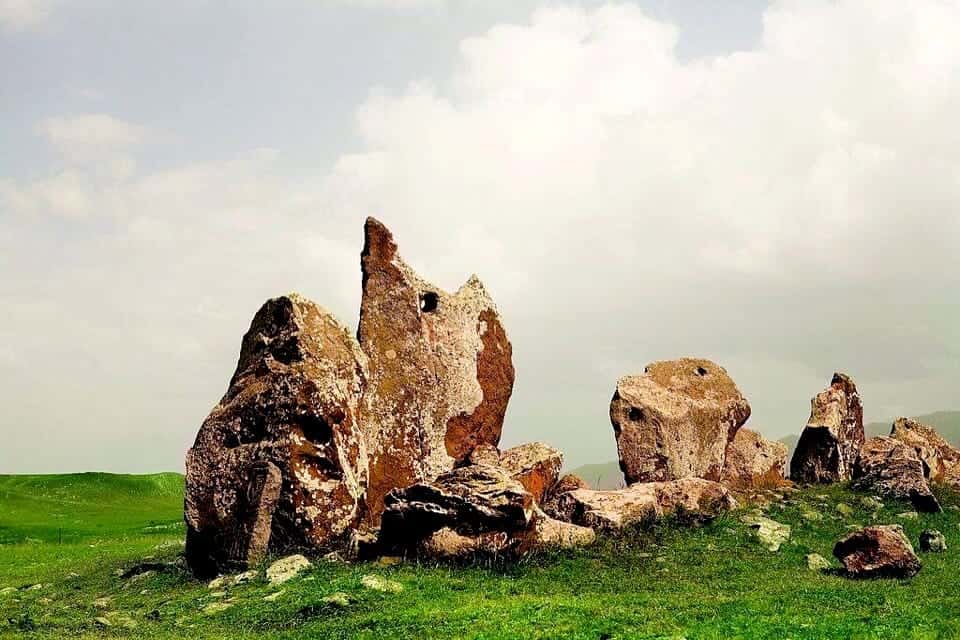Sisian is located 220 km south of Yerevan. It is best known for the nearby site of the scattered peculiar rocks with holes in them called “Zorats Karer” or “Carahunj”. It is believed to be an ancient observatory.
Sightseeing
Zorats Karer is a major archeological site located 3 km (1.8 mi) north to Sisian, about 400 m away from the highway. The place is also known as the Armenian Stonehenge dates back to 3rd millennium BC. The name “Carahunj” consists of 2 Armenian words “car” which means “stone” and “hunj” which means “sound”. So the name translates as “sounding stones” probably referring to the fact that the wind makes a whistling sound when passing through the holes in the stones. The heights of the stones range from 0.5m to 3m (1.6 – 10 ft). Different angled holes are aligned with some stars in the night sky leading the scientists to believe this place was an ancient astronomical observatory.
Shaki Waterfall is one of the landmarks of Syunik region. It is located 3 km (1.8 mi) northwest from Sisian. The waterfall is named after a small river Shaki starting from the Vorotan river. The waterfall’s height is 18 m (59 ft). The waterfall is indeed beautiful when it’s running. That is to say, sometimes it may be “turned off” because of the hydro-electric station built on Shaki river.
Syuni Monastery is a 6th – 7th century monastery also called Sisavan or St Hovhannes (John) located on the north hill in Sisian. There are medieval manuscripts still kept in the monastery. These manuscripts are on display for the public. They give you a time-travel feeling. There is another unique exhibition of miniature artworks also displayed in the church. You’ll be able to see miniature figures of microscopic scale through a magnifying glass. The author is the renowned miniature sculptor E. Ghazaryan born in Sisian.
Ughtasar Petroglyphs. Ughtasar is a mountain near the town of Sisian. It is famous for its prehistoric petroglyphs (rock engravings) found in the caves. “Ughtasar” translated from Armenian means “Camel Mountain” named so because of the resemblance with the camel humps. The steep ascend is reachable only by off-road vehicles if you are not overly adventurous to climb there on foot. The site has over 2000 pictograms carved on volcanic rocks believed to belong to Paleolithic Era (12 000 BCE). The carvings depict hunting scenes, different animals, geometric figures and even Zodiac signs. Though discovered in the 20th century the place is still little studied and many signs and their meanings remain not understood. There is a hypothesis by an Armenian archeologist that an unknown writing system might be present here waiting to be deciphered.


Leave a Reply